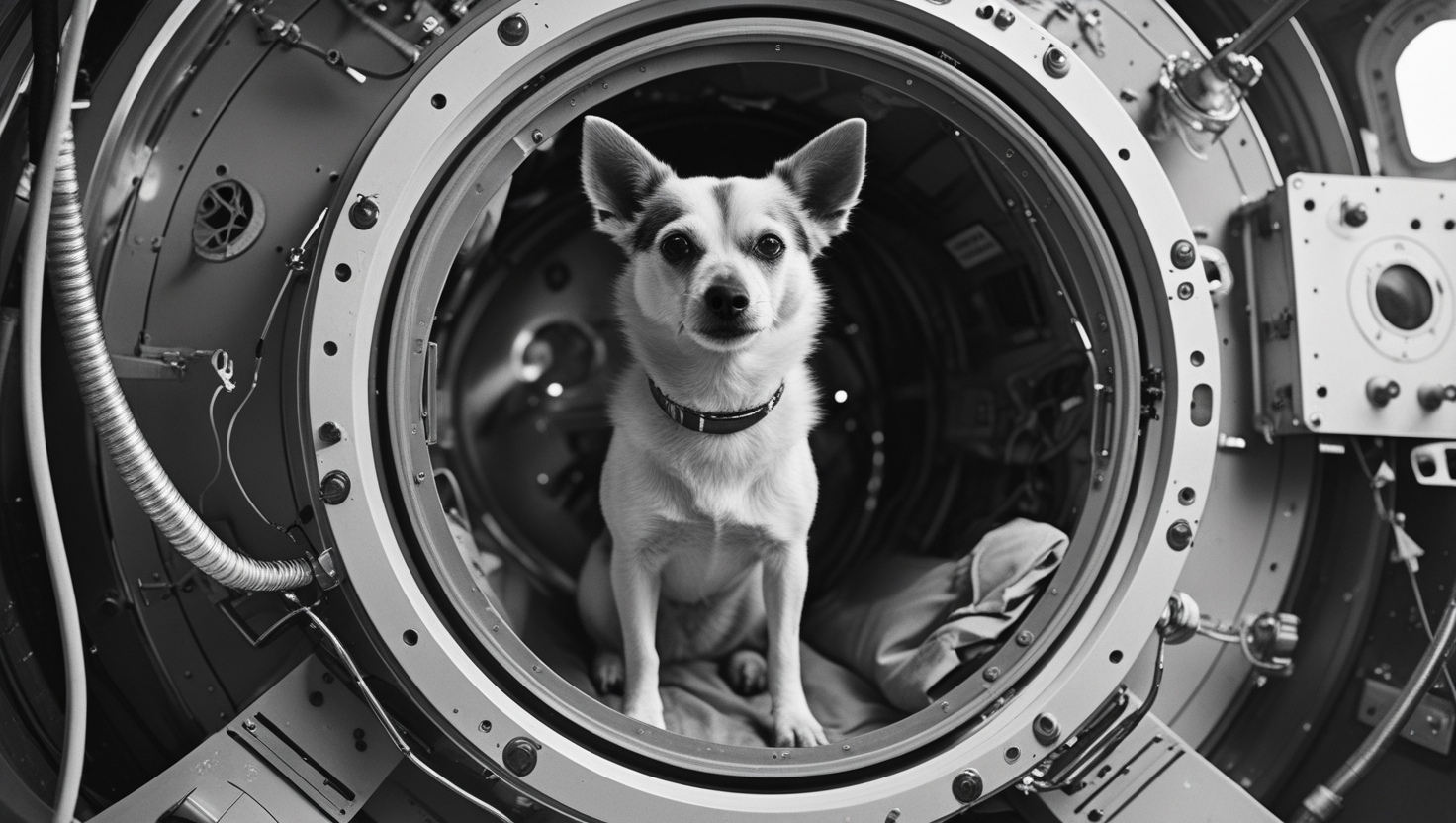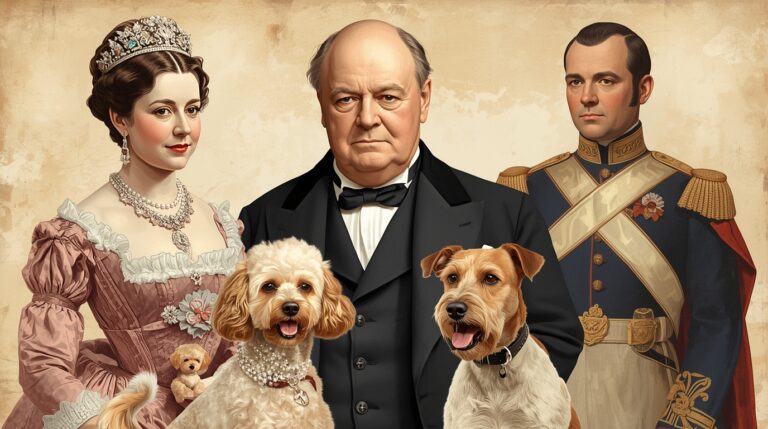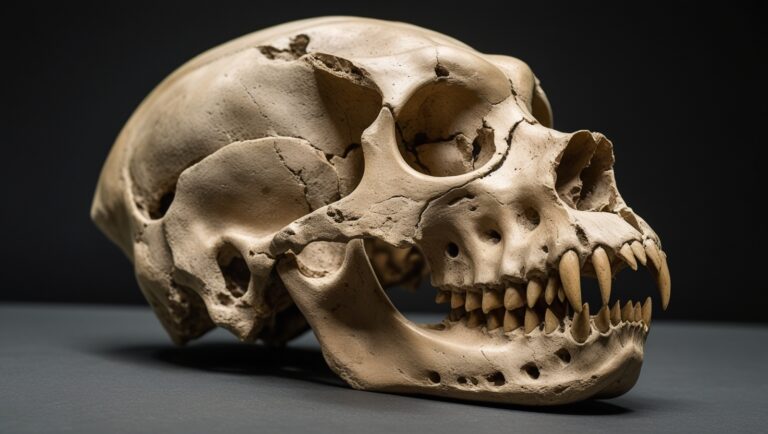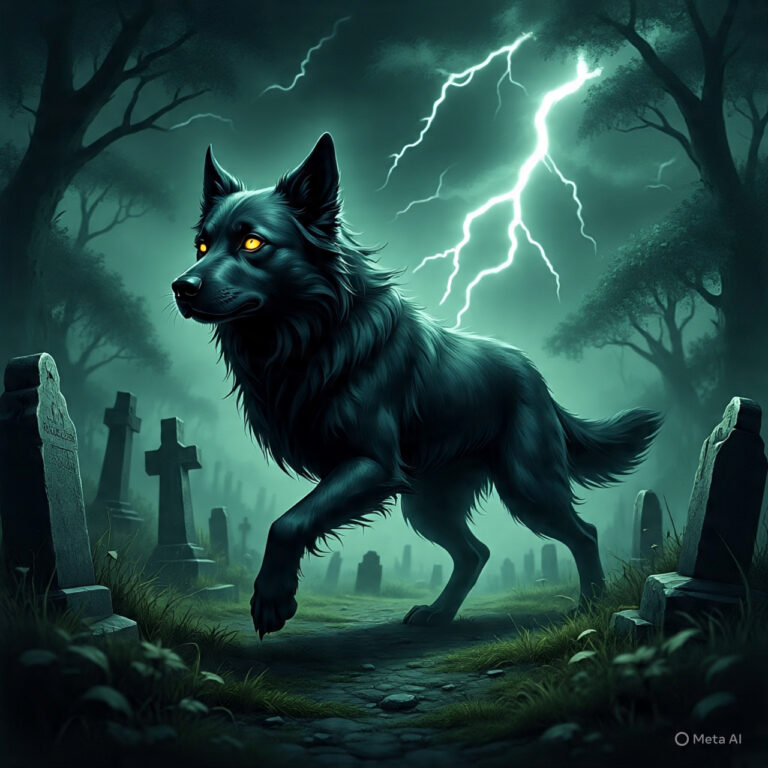Laika: The First Dog in Space

Introduction
On November 3, 1957, a Soviet spacecraft named Sputnik 2 blasted off into Earth’s orbit, carrying an unexpected and extraordinary passenger: a small dog named Laika. This marked the first time a living creature entered space and orbited Earth, forever altering the course of space exploration. Laika’s journey was not only a scientific milestone but also a deeply symbolic moment in the Cold War-era space race. Her mission sparked admiration, grief, controversy, and ultimately reflection on humanity’s moral responsibilities in the pursuit of knowledge. Laika’s story endures because it is one of sacrifice, scientific ambition, and the bittersweet cost of being first.
Who Was Laika?
Laika was a stray dog, born in the streets of Moscow around 1954. She was one of many small, mixed-breed dogs rounded up by Soviet scientists for use in their space program. Chosen for her calm demeanor and small size, Laika was selected because she exemplified the traits needed to survive a physically and psychologically demanding mission. At just 6 kg, she was compact, resilient, and adaptable—key traits for fitting into the limited confines of a spacecraft. Originally named Kudryavka (meaning “Little Curly”), she was later given the name Laika, derived from the Russian word for “bark.”
The Space Race and the Cold War Context
Laika’s journey cannot be separated from the geopolitical tension of the late 1950s. Following the successful launch of Sputnik 1, the first artificial satellite, on October 4, 1957, the Soviet Union sought to solidify its leadership in space. With the United States in fierce competition, space became a stage for ideological rivalry between communism and capitalism. Sending a living creature into orbit would demonstrate not just technical prowess, but also ideological superiority. Sputnik 2 was launched to coincide with the 40th anniversary of the Bolshevik Revolution, making Laika’s mission a potent mix of science and Soviet propaganda.
Soviet Animal Cosmonaut Program
Long before Laika’s mission, the Soviet Union had been experimenting with sending animals into space. These early flights helped scientists understand the biological effects of high altitudes, acceleration, and zero gravity. Dogs were ideal candidates due to their loyalty, trainability, and size. Dozens of canines were sent on suborbital missions in pressurized capsules and recovered. Laika was selected from a pool of ten finalists, having undergone rigorous testing and behavioral assessments. These preliminary flights were essential in preparing for more complex orbital missions, and Laika was chosen as the first to venture where no living being had gone before.
Training Laika for Space Travel
Laika underwent months of intense training to prepare for her unprecedented journey. She was placed in increasingly smaller cages to acclimate to the tight quarters of Sputnik 2. She was also exposed to simulations of launch vibrations and noise, and subjected to centrifuge training to endure the force of takeoff. Electrodes were attached to her body to monitor vital signs, and she was taught to eat a high-protein gel through a feeding tube. Despite the care, the training was physically taxing and psychologically stressful. By the time of the mission, Laika had lost weight and exhibited signs of anxiety, but remained calm and obedient.
The Sputnik 2 Mission Design
Sputnik 2 was significantly larger than its predecessor and weighed over 500 kilograms. The spacecraft was designed to carry Laika in a pressurized cabin equipped with life-support systems, oxygen regeneration, and waste collection. However, it lacked a return mechanism—there was never a plan to bring Laika back. The spacecraft included sensors to record heart rate, respiration, blood pressure, and body temperature, allowing Soviet scientists to monitor Laika’s health in real time. The mission aimed to test how a living organism would respond to sustained weightlessness and the orbital environment, essential knowledge for future human spaceflight.
Launch Day: November 3, 1957
Laika was launched into orbit from the Baikonur Cosmodrome aboard Sputnik 2 on November 3, 1957. The mission coincided with the 40th anniversary of the October Revolution, and the timing was deliberately chosen to align Laika’s journey with the narrative of Soviet progress. The launch was successful. Laika survived the lift-off and entered orbit, becoming the first living creature to circle the Earth. Soviet media hailed the event as a triumph, and images of Laika appeared on stamps, posters, and newsreels around the world. She was called the “first traveler to the stars.”
Laika’s Time in Orbit
Official Soviet reports initially claimed that Laika had survived for several days in orbit, consuming food and remaining calm under stress. However, the truth was far more tragic. While Laika did survive the launch and reached orbit, her capsule overheated due to a malfunction in the thermal control system. Within hours, Laika died from heat and stress. This was not revealed until decades later. In reality, Laika’s death occurred within six to seven hours of launch. Despite this, data from the brief mission provided critical information about biological responses to spaceflight, including the effects of weightlessness on respiration and circulation.
Cause of Death: The Reality Behind the Story
For many years, the Soviet Union concealed the details of Laika’s death, maintaining that she had died painlessly after several days in orbit. In 2002, Russian scientist Dimitri Malashenkov revealed the truth at a spaceflight conference. Laika died from overheating and panic-induced stress within hours of launch. The spacecraft’s thermal control system failed, and the cabin reached temperatures above 40°C (104°F). These revelations led to public outcry and reevaluation of the ethical choices made by mission planners. The story underscored the high cost of human advancement—especially when that cost is borne by those who cannot consent.
Public and Scientific Reaction
Laika’s mission received mixed reactions from around the world. In the Soviet Union, it was lauded as a heroic success. Soviet newspapers printed romantic stories and poems about Laika, and she became a symbol of Soviet progress. However, in Western nations, animal welfare organizations criticized the decision to send a dog into space with no plan for recovery. Demonstrations were held in multiple cities. Scientists debated whether the scientific gains justified the moral cost. The event catalyzed conversations about the ethics of animal testing and foreshadowed future public scrutiny of space missions involving living creatures.
Laika’s Legacy in Space Exploration
Despite the tragedy, Laika’s mission significantly advanced scientific understanding. Her data helped engineers refine spacecraft life support systems, cabin pressure control, and biometric monitoring tools. Her sacrifice directly influenced the design of later missions, including those involving humans. She paved the way for the successful return of future canine cosmonauts, such as Belka and Strelka, who flew and returned safely in 1960. Laika’s flight marked a critical transition point: from conceptual theory to applied human spaceflight readiness. Her brief time in orbit made her a martyr for science and a permanent part of space history.
Ethical Questions Raised by Laika’s Sacrifice
Laika’s mission remains one of the most ethically fraught moments in scientific history. Critics argue that the Soviet Union knowingly sent a living creature to her death for propaganda purposes. Even within the Soviet scientific community, there was disagreement. Lead scientist Oleg Gazenko later expressed regret, stating, “The more time passes, the more I’m sorry about it. We shouldn’t have done it… We did not learn enough from the mission to justify the death of the dog.” This admission reflected a broader reckoning within the scientific world and sparked the development of stricter ethical guidelines for the use of animals in research.
Commemoration and Memorials
Laika has been honored in numerous ways. In 2008, a monument was unveiled near the Moscow military research facility where she was trained. It features a bronze dog standing atop a rocket. The Russian people still remember her with reverence, and her image appears in museum exhibits, postage stamps, and educational material. In Ōdate, Japan, birthplace of another famous dog, Hachikō, a small plaque commemorates Laika as part of a broader tribute to loyal and heroic dogs. Her story is also enshrined at the Cosmonautics Memorial Museum in Moscow, where her image appears alongside that of human space pioneers.
Laika in Global Pop Culture
Laika has transcended the boundaries of space science to become a pop culture figure. She has inspired books, documentaries, and animated films. British indie band Laika took her name. Artists such as Nick Abadzis have published graphic novels recounting her story with emotional nuance. Laika has also appeared in songs by Arcade Fire and Regina Spektor. In these cultural works, she is often portrayed not as a victim, but as a cosmic traveler—brave, tragic, and eternal. Her story continues to inspire narratives about loyalty, sacrifice, and the price of discovery.
Comparison with Other Space Animals
Laika was the first animal to orbit Earth, but not the only one to enter space. Later Soviet missions sent dogs like Belka and Strelka, who survived their flights and returned safely. The United States launched rhesus monkeys and, later, chimpanzees like Ham, who completed complex tasks during flight. France sent Félicette, a cat, into suborbital space in 1963. While many of these animals were part of essential research, Laika stands apart as the first orbital traveler and the first to die in space. Her legacy sets a moral and scientific benchmark for all who followed.
Laika as a Cold War Symbol
During the Cold War, Laika served as a potent symbol of Soviet achievement. Her flight was used in propaganda to demonstrate technological superiority and ideological strength. Schoolchildren were taught her story as part of patriotic education. Posters depicted her as a space pioneer, while toys and books celebrated her heroism. However, her image also became a symbol of resistance in the West—an innocent victim of political rivalry. Over time, Laika has come to embody both the nobility of exploration and the cost of ambition, a symbol powerful enough to transcend borders and ideologies.
How Laika Is Taught Today
In classrooms and science museums around the world, Laika’s story is used to teach lessons about space exploration, ethics in science, and the history of the Cold War. Her image appears in STEM curricula, particularly in units about the early space race. Educational programs now focus not just on her role in history, but also on what her story teaches us about humane scientific practices. Schools often use Laika’s narrative to encourage critical thinking about the balance between innovation and ethical responsibility.
Scientific Advancements Sparked by Laika’s Mission
Laika’s flight provided key biomedical data used to enhance astronaut safety. She helped scientists understand how cardiovascular and respiratory systems respond to microgravity. Her mission contributed to the refinement of thermal insulation, oxygen replenishment systems, and stress monitoring tools. Subsequent missions adopted these learnings to improve astronaut survival and return mechanisms. The evolution from Laika’s fatal voyage to Yuri Gagarin’s successful mission in 1961 occurred in part because of the lessons learned from her short, impactful life in orbit.
Animal Testing in Space: Then and Now
Since Laika’s time, the standards for animal testing in space have changed dramatically. Modern space agencies like NASA and ESA enforce stringent ethical guidelines. Today’s missions prioritize recoverability, humane treatment, and the minimization of suffering. Non-human biological experiments now rely heavily on lower organisms like mice, insects, and microbial life to avoid the ethical complexities that surrounded Laika’s flight. Her sacrifice prompted both public and institutional reevaluation of how animals are used in science and led to new frameworks for ethical experimentation.
Conclusion
Laika’s journey was brief, her end was tragic, but her impact is eternal. She was not simply a dog sent to space—she was the first being to orbit Earth and, in doing so, she redefined humanity’s reach into the cosmos. Her mission taught us valuable lessons about biology, engineering, ethics, and ourselves. While we remember her as a scientific pioneer, we also honor her as a symbol of loyalty, courage, and the unvoiced cost of progress. Laika remains immortal in the history of space exploration, her name forever among the stars.





